Additional Solar
The more solar, the better. It is amazing how much modern panels produce these days. Many people install large panals aft of the traveller but then they stick out aft of the overhang. I don’t want that because it disrupts the look of the boat in my opinion. But that is personal. We also have a Watt and Sea hydro generator so we can manage with less solar. It is a pity that Foutaine Pajot did not extend the overhang such that high efficient industrial panels can be installed but it is what it is. We have the standard 4 x 100 watt factory option aft of the traveller. We added 3 x Solbian 165 Watt panels, each with its own mppt 75/15 controller. Individual controllers give best results. The challenge was to install the Panels without visible cables.
The aft panel is a flexible Solbian SR160L panel with a top connector. I positioned the connect aft, so that I could run the cables through the traveller beam and vertical support thereof, directly into the engine room.
The middle and forward panels are also flexible Solbian SR160L but these have a connector on the underside. Solbian can make custom panels with specified connector positions. The goal is to place them such, that the connectors are exactly above the middle of the overhead galley panel. I am not giving you the exact measurements, as they are very critical and depend on how far aft or forward you install the panel. On the picture have roughly indicated with the red suction cups where the connectors need to go. That way you can lead the cables invisibly towards the area behind the oven. From there you can pull cables to the engine room. It is a lot of work and requires a lot of boat yoga. Together with a friend I spent two days installing the panels and running the cables.
On the best day so far, each panel generated 900 Wh (75Ah), with a maximum of 170 Watt (!). Normally I calculate with the rated energy x 6 hours (160×6=960 Wh or 80Ah per day). Our total installation has 840 Watt. On average, this will generate 420Ah per day which is roughly the daily power consumption of the boat without making water.
The orientation of the boat makes a huge difference. These panels are installed on the port side. In the Carribean, the prevailing wind is from the east, which means that the panels face North. In the winter, the sun is in the South. End of April the sun will be over head and move futher North. On anchor, the output will be much better by then.
When crossing the Atlantic, sailing west, the panels are facing South!
If you know the panels are not going to manage to fill up the batteries on certain days, then run the generator in the morning. Empty batteries can be charged quicker so this reduces generator time. Let the sun finish it off. When batteries are almost full, you need a lower charge current, which is automatically the case at the end of the afternoon when the sun is lower.


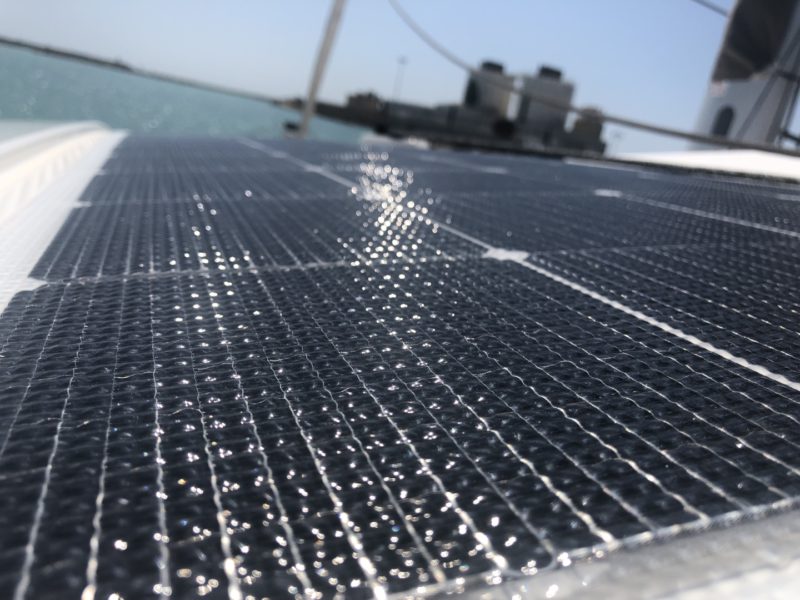
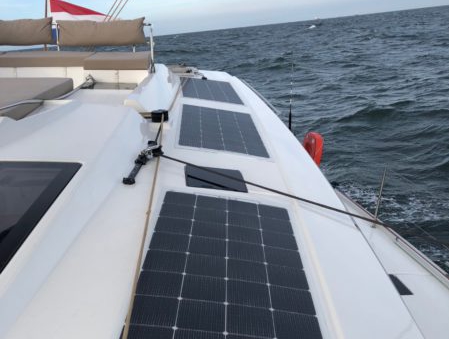

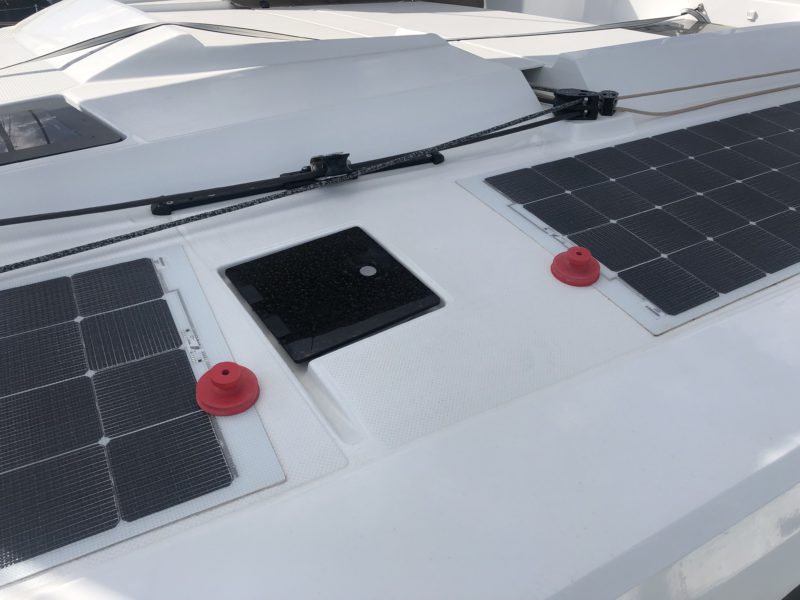
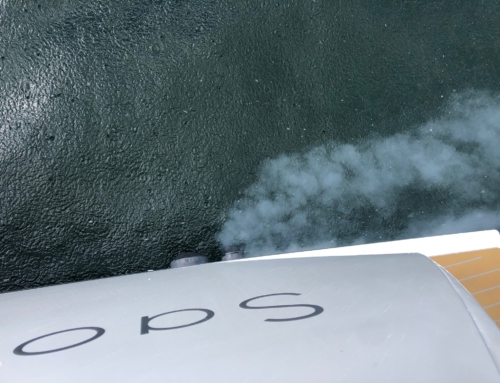
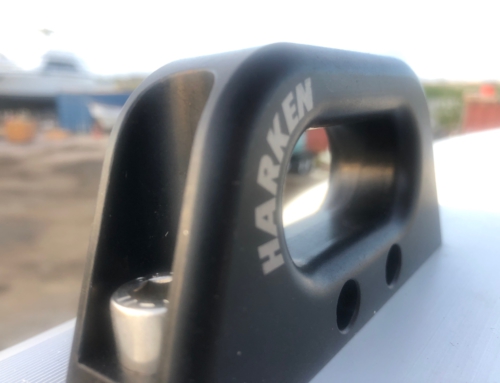
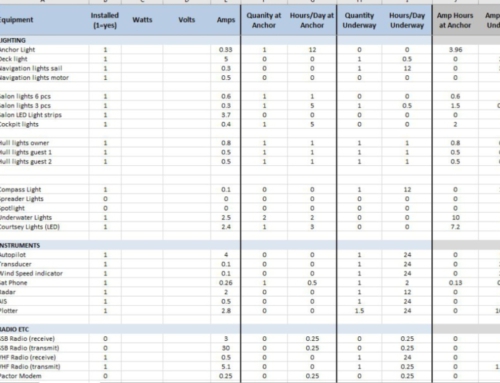
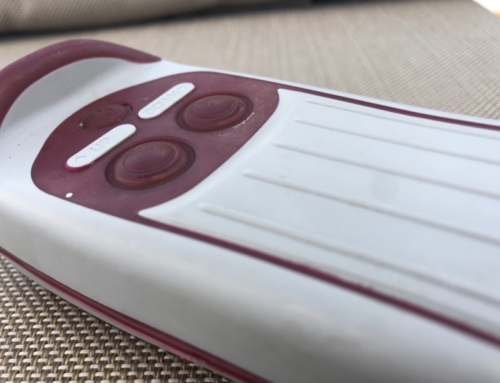
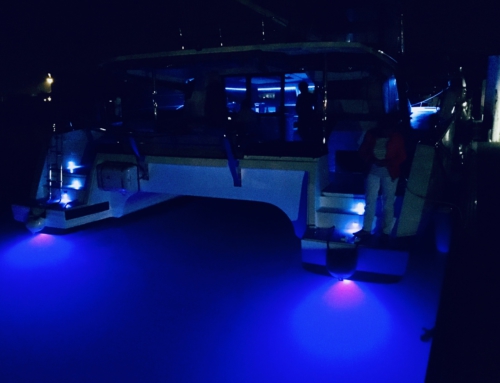
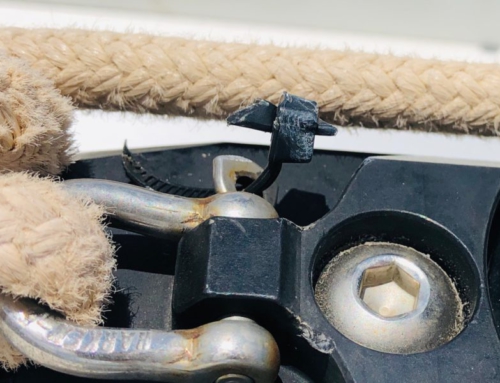
Thank you for all the interesting and practical details you give about so various subjects . About solar, is your installation lightning protected,
how is it done , and enlarging the subject, could you post a description of your boat lightning protection, both AC and DC , electronics, VHF etc…if there is one
All the best for your cruise . And thank you again
Hi Patrick,
We do not have any lightning protection. I have not read about any 100% effective solution. Insurance companies do not require anything, which says enough.
We did have an indirect hit in 2018. The electromagnetic flux destroyed our inverters, radar and sonar. All were connected via a FTP cable on board.
We keep ipads and computers in the oven (make sure to tell the crew to not put on the oven) when there is lightning around. It works as a cage of Faraday.
Robbert
Hi Robbert, how did you fix the panels? Just with Sikaflex or something similar? I am About to copy some of your ideas this season. Thank you for your descriptions.
Hi Thorsten,
The Solbian panels have a self-sticky backside. I did seal the edges with a good qulaity Silicon kit (SikaSil)
Hi Robbert
I’m a little confused. You have a total solar install of 840W, how did you arrive at 420Ah/day?
Taking your 165W panel average output of 40Ah/day, 840/160*40 gives me 210Ah/day.
What am I missing?
AL
Hi Allan,
You are correct. I have mixed up two approaches. It is either half of rated WP x hours of daylight or 5-6 hrs per day x max Wp. I will correct the post. Thanks for pointing it out.